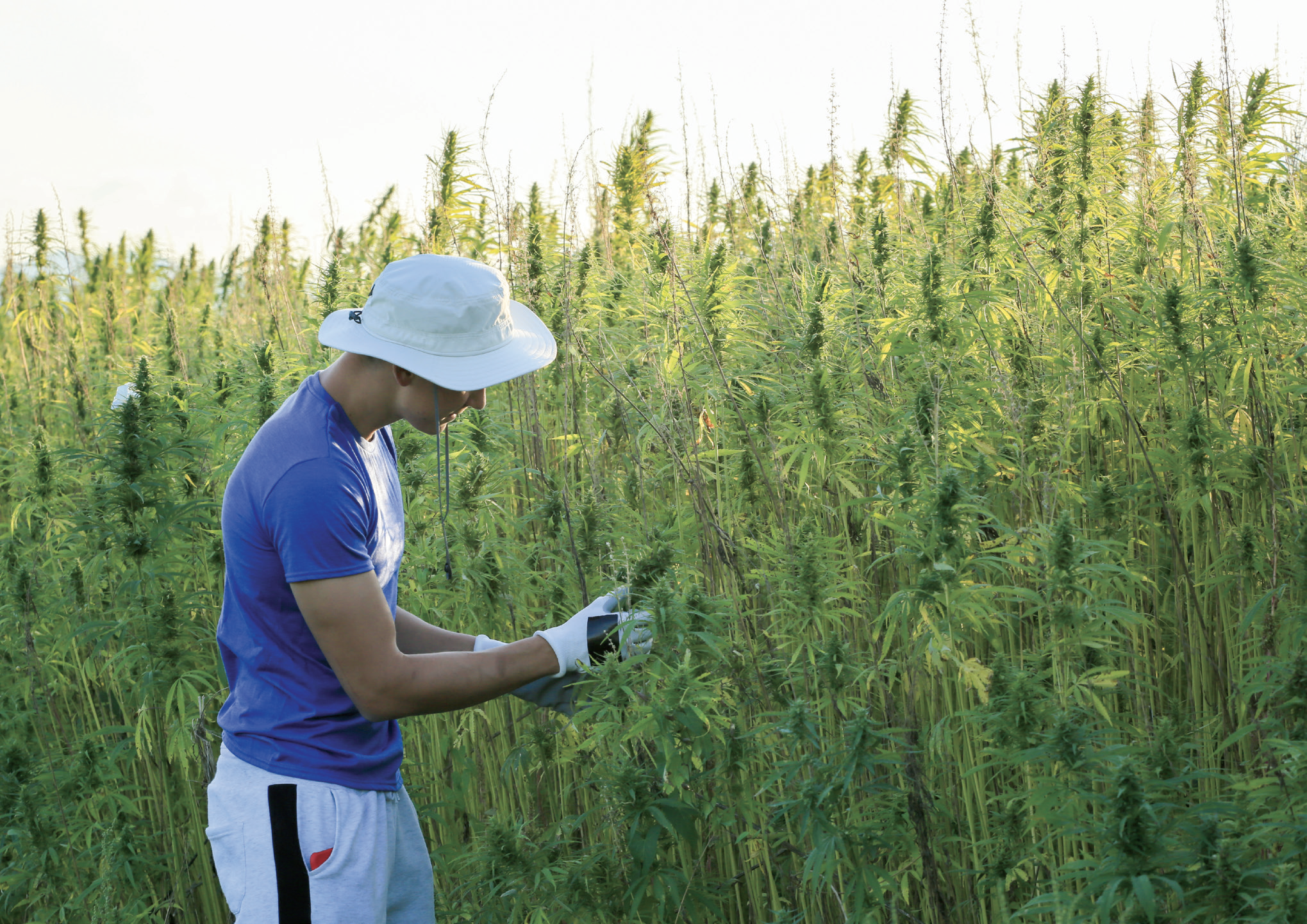
Apr 22, 2021
Rodale’s California Organic Center studies hemp pruning practices
Rodale Institute’s California Organic Center in Camarillo was established in 2020 to serve as a research and education hub for growers in Southern California.
One of three regional resource centers around the country, this center focuses research on regenerative organic practices under conditions of climate change, water shortage, increasing land prices and a growing population. Powered by Ventura Seed Co., the center also is studying the potential of industrial hemp as a cash crop for organic farmers.

Biomass production in the hemp plant is known to vary according to the nature of varietal growth, and nutritional and environmental conditions. In this respect, removing the terminal main stem bud (topping) is considered an important adjustment for plant geometry. Topping of industrial hemp may increase total plant biomass and flower bud production, leading to greater levels of extractable cannabinoid compounds and ultimately improving its value as a medicinal product.
Although topping has been used as a cultural practice on a variety of crops, insufficient evidence is available to determine the way pruning impacts hemp plant phenotype and crop load. Therefore, in this study we investigated the effects of topping on industrial hemp growth and biomass production at the Rodale Institute California Organic Center in Camarillo, California.
Materials and Methods
 A trial was conducted at the McGrath Family Farm in Camarillo, California to determine the effect of topping on three varieties of industrial hemp for CBD production. Soil was disked and fertilized with 7.5-5-7.5 NPK at 800 pounds per acre. On June 26, beds were formed and black plastic mulch was laid down along with the drip irrigation. Beginning in the middle of July, the plants were fertilized once a week with a 10-0-0 fertilizer (Ferticell Explorer) at 2 pounds per gallon and a 2-20-2 fertilizer (Ferticell Active NPK) at 2.8 pounds per gallon until August 15. The last three fertilizer applications included a micronutrient fertilizer 1-0-0 (Microelements 1-0-0 Ferticell) at 1 pint per gallon. All fertility amendments were approved for use in a USDA-certified organic system. On July 10, seedlings were transplanted in a split-plot design with topping practice as main treatment and varieties as secondary factor with four replicates. Plants were transplanted with a 4-by-7-foot spacing, 1.556 plants per acre. At the beginning of August male plants were removed.
A trial was conducted at the McGrath Family Farm in Camarillo, California to determine the effect of topping on three varieties of industrial hemp for CBD production. Soil was disked and fertilized with 7.5-5-7.5 NPK at 800 pounds per acre. On June 26, beds were formed and black plastic mulch was laid down along with the drip irrigation. Beginning in the middle of July, the plants were fertilized once a week with a 10-0-0 fertilizer (Ferticell Explorer) at 2 pounds per gallon and a 2-20-2 fertilizer (Ferticell Active NPK) at 2.8 pounds per gallon until August 15. The last three fertilizer applications included a micronutrient fertilizer 1-0-0 (Microelements 1-0-0 Ferticell) at 1 pint per gallon. All fertility amendments were approved for use in a USDA-certified organic system. On July 10, seedlings were transplanted in a split-plot design with topping practice as main treatment and varieties as secondary factor with four replicates. Plants were transplanted with a 4-by-7-foot spacing, 1.556 plants per acre. At the beginning of August male plants were removed.
Data collection on plant growth started two weeks after transplant and repeated at 15 days intervals recording morphological characteristics such as plant height and number of nodes. Topping practice was performed during the first week of August, removing the apical node of the main shoot (see the photo at top right).
Plants were harvested according to visual evaluation of inflorescence ripeness on Sept. 25, Oct. 17 and Nov.3 for First Frost, Grape Soda and Cherry Soda varieties, respectively. Plants were destructively sampled and total dry weight of above and below ground biomass of ten plants of each variety in each main plot were measured at harvest.
Conclusion
In the study presented here, growth and production of three industrial hemp varieties after topping pruning practice was reported. It was shown that topping, a form of pruning that removes the apical meristem to promote lateral branching, positively impacted hemp production, increasing plants aboveground biomass of Grape Soda and Cherry Soda varieties. Hence, it is recommended to incorporate this canopy management procedure in hemp growing practices for Grape Soda and Cherry Soda production. Above ground plants’ weight of topped and un-topped First Frost variety did not differ, therefore a topping practice on this variety is not currently advised.
In this experiment topping was performed one-time only, before flowering; however the effects of earlier topping dates and the frequency of the cut need to be investigated as well as the effect of topping on cannabinoid production, which ultimately determines the economic value of the crop.
Additional analyses will consider the cannabinoid production, economic value and labor costs associated with topping.
To learn more about the work being done at the Rodale Institute California Organic Center, visit RodaleInstitute.org/California or contact us at California@RodaleInstitute.org.






